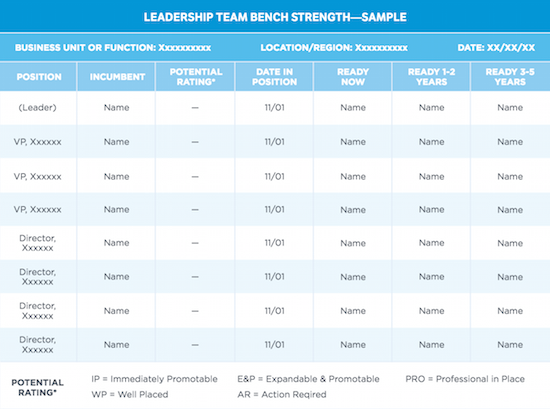
This post is part of a series based on the research report Mastering Talent Planning by the National Center for the Middle Market in partnership with Vistage. Download the full report here.
When the Center asked middle market companies what would happen if a key leader were to leave the firm unexpectedly, most companies agreed that such an event would lead to at least some level of disruption for their company, especially if an owner, president, or vice president were to exit the business. However, just 50% of firms have plans in place to handle this type of unexpected departure.
Why take chances when it comes to an issue as important as a company’s leadership? In many cases, companies believe (perhaps foolheartedly) that their top brass just won’t leave, and most firms expect their current leaders to stay in their positions for the next five years or longer. Or, if a leader does vacate her post, companies believe finding a replacement won’t be all that difficult.
Furthermore, companies find the process of lining up successors for key positions to be one of the most challenging aspects of talent planning, and fewer than half of firms are highly satisfied with how they are currently performing in this area. But difficult or not, succession planning is a critical component of the talent planning process. Succession planning is associated with better overall talent planning performance. It’s also a much more prevalent activity among the fastest-growing, best-performing middle market firms.
Start with a chart.
A good place to start improving your succession planning effort is with a bench strength chart, such as this one:

Whether your organization has formally recognized it or not, you do have bench strength, or some depth of talent for your key positions. By using a chart like the one above to map out that bench strength, you take an important first step in the succession planning process.
Basically the chart works by listing out key positions, rating the incumbents in those positions, and noting any retention risks. This exercise will tell you at a glance if any of your key players may be vacating their positions soon, due to promotion or some other reason, and if your business needs to start thinking about how you will fill that person’s shoes.
Determine how deep your bench is.
From there, you can list out individuals—either within your business or external candidates—who may be ready to fill each role right now, in one to two years, or in three to five years. The Center’s research shows that most middle market firms are at least somewhat satisfied with the talent pools available to them both within and outside of their companies. So while completing these charts may take time and effort, and often requires assembling your leaders for candid discussions about the talent in your firm, it’s an accomplishable task that can reveal significant and practical insights.
For example, if your organization has a deep bench, you will have candidates ready to fill roles in both the near and long term. But if your chart reveals that your business is short on backfills, it might be time to think about staffing up or investing in training and development programs to better prepare staff members to lead your organization in the years ahead.
Be better prepared for your future.
The Center’s research suggests that improving succession planning efforts, including analyzing or charting current bench strength, may be one of the best ways for a company to enhance its overall talent planning efforts. By planning who will be next in line to lead your business, your company takes an important step in ensuring it’s future success. You also lay the groundwork for other critical talent planning initiatives, including talent review and rating, identification of high-potential employees, and determining current and future skills gaps.
To read more about succession planning and other talent planning initiatives in the middle market, see the Center’s full research report, Mastering Talent Planning: A Framework for Success.
Others in this series
Post 1: What is Talent Planning? And Why Does it Matter?
Post 2: The ABLE Framework: An Approach for Upping Your Talent Planning Game
Post 3: Identifying Potential: Does your business have a plan for recognizing future leaders?